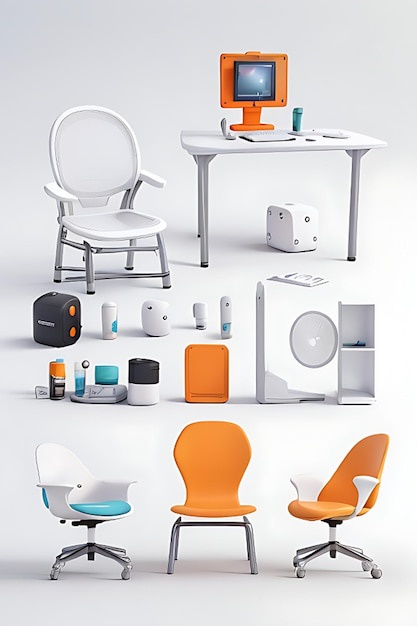In the dynamic landscape of healthcare, the importance of having the right medical furniture cannot be overstated. From hospitals to clinics, medical furniture plays a crucial role in patient care, comfort, and overall efficiency of healthcare facilities. Whether you're setting up a new medical practice or upgrading existing equipment, navigating through the myriad options can be overwhelming. This comprehensive guide aims to simplify the process and help you make informed decisions when selecting medical furniture.
Understanding the Importance of Medical Furniture
Medical furniture encompasses a wide range of products designed to meet the unique needs of healthcare environments. These include examination tables, patient beds, treatment chairs, medical carts, and more. Each piece serves a specific purpose, contributing to the seamless operation of medical facilities and ensuring optimal patient care.
Factors to Consider When Choosing Medical Furniture
-
Durability and Quality: Medical furniture is subjected to frequent use and must withstand the rigors of healthcare environments. Look for products made from high-quality materials such as stainless steel, aluminum, or durable plastics. Ensure that the furniture meets industry standards for safety and durability.
-
Comfort and Ergonomics: Patients spend considerable time on medical furniture, so comfort is paramount. Choose furniture with ergonomic designs that support proper posture and minimize discomfort. Features such as adjustable heights, padded surfaces, and ergonomic contours enhance patient comfort and promote recovery.
-
Hygiene and Infection Control: Maintaining a clean and hygienic environment is critical in healthcare settings. Select furniture with smooth, non-porous surfaces that are easy to clean and disinfect. Consider features such as antimicrobial coatings or removable cushions that facilitate thorough cleaning and minimize the risk of cross-contamination.
-
Functionality and Versatility: Medical furniture should be versatile enough to accommodate various patient needs and procedures. Look for adjustable features, such as reclining backrests or height-adjustable surfaces, that enhance functionality and adaptability. Choose modular furniture systems that can be customized to fit specific workflow requirements and space constraints.
-
Safety and Accessibility: Patient safety is paramount in healthcare settings. Choose furniture with safety features such as locking mechanisms, sturdy construction, and weight capacity ratings. Ensure that the furniture complies with accessibility standards to accommodate patients with mobility impairments or special needs.
-
Aesthetics and Environment: Medical furniture contributes to the overall ambiance of healthcare facilities. Consider the aesthetic appeal of furniture pieces and how they integrate with the design and decor of the space. Choose colors and finishes that create a welcoming and calming environment for patients and staff.
Common Types of Medical Furniture
-
Examination Tables: These tables are used for patient assessments, examinations, and minor procedures. Features may include adjustable height, stirrups for gynecological exams, and storage drawers for medical supplies.
-
Patient Beds: Patient beds are essential for providing comfort and support to patients during hospitalization or recovery. Consider features such as adjustable positions, side rails for safety, and integrated patient monitoring systems.
-
Treatment Chairs: Treatment chairs are used for various medical procedures, including dialysis, chemotherapy, and infusion therapy. Look for features such as reclining backrests, adjustable armrests, and ergonomic design for patient comfort during lengthy treatments.
-
Medical Carts and Trolleys: These mobile units are used for transporting medical supplies, equipment, and medications throughout healthcare facilities. Choose carts with durable construction, ample storage capacity, and ergonomic handles for ease of maneuverability.
Conclusion
Investing in the right medical furniture is essential for ensuring the comfort, safety, and efficiency of healthcare environments. By considering factors such as durability, comfort, hygiene, functionality, safety, and aesthetics, healthcare facilities can select furniture that meets the unique needs of patients and staff. Whether you're outfitting a hospital, clinic, or medical office, prioritize quality and suitability to create a conducive environment for patient care and well-being.


No comments yet